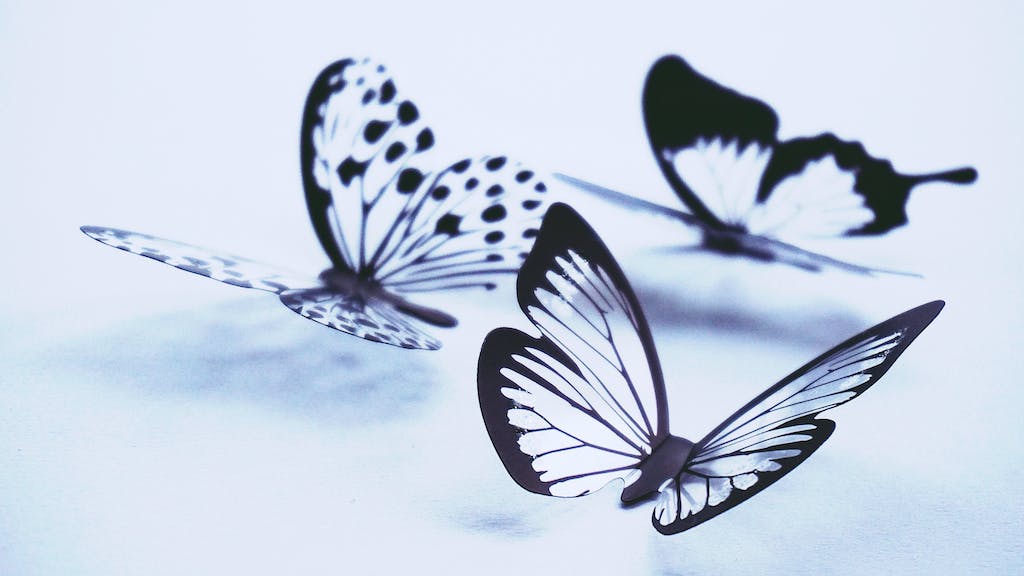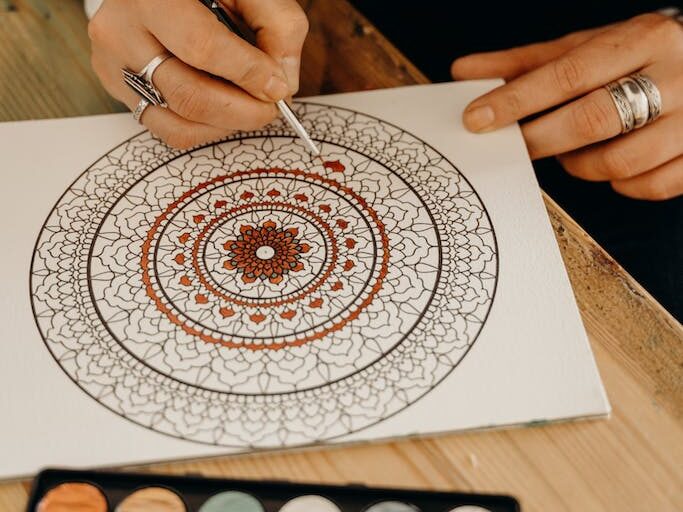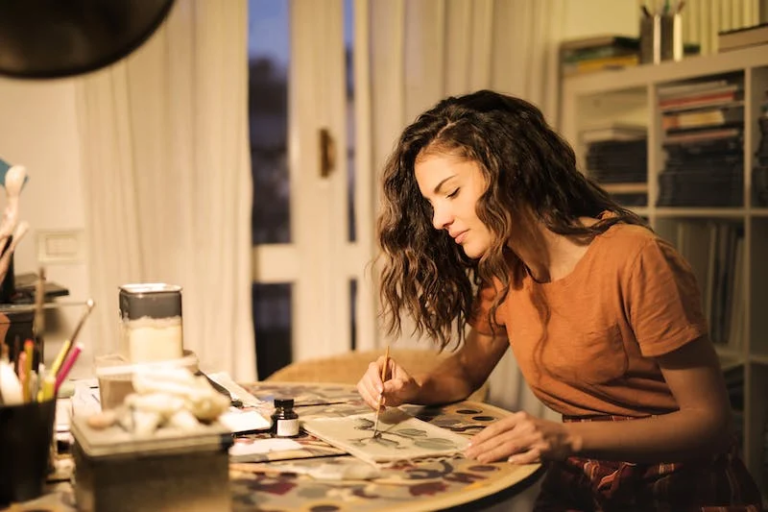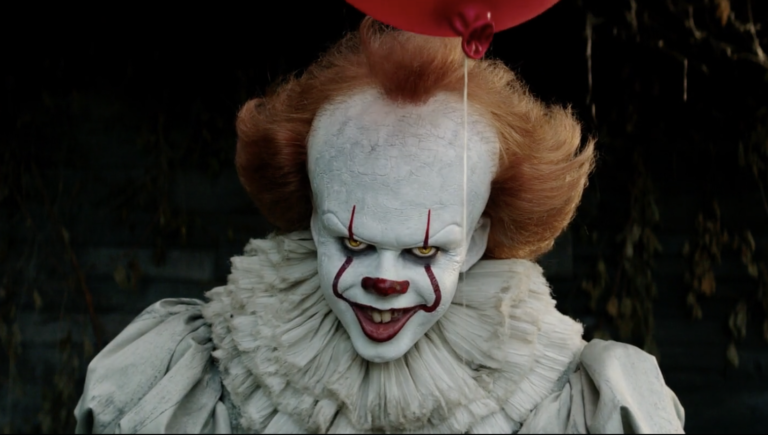Drawing Therapy: Healing through Art Psychology
Art therapy is a unique form of therapy that has been gaining popularity in recent years. It uses the creative process of art-making to improve the physical, mental, and emotional well-being of individuals. Drawing therapy, in particular, has been found to be an effective way to promote healing and self-expression. This article will delve into the psychology behind art therapy, specifically the benefits and techniques used in drawing therapy, and how it can be used to promote psychological health. Join us on a journey to discover the power of art therapy and its potential to improve various areas of our lives.
What is Drawing Therapy?
Exploring emotions through drawing can be a productive and empowering exercise. By utilizing this expressive medium, individuals are able to access personal insights and reflect on their thoughts, feelings and behaviors in a non-threatening environment. Through this process, it is possible to cultivate new coping strategies and discover personal growth.

Drawing therapy is particularly beneficial for those who are dealing with trauma, grief or other difficult life circumstances. By providing a safe space to express the emotions that may be too difficult to verbalize, it can be a source of comfort and a tool for personal discovery. This process can help individuals find new meaning and purpose in their lives.
This type of therapy can have a transformative impact on one’s emotional well-being. By creating art, individuals can gain a better understanding of themselves and how to effectively manage their feelings. Drawing therapy can be a valuable resource for those looking to gain a deeper insight into their inner world and find positive ways to navigate life’s challenges.
The Benefits of Drawing Therapy
Drawing can provide numerous advantages to people. Through this outlet, people can gain new realizations about themselves and their feelings, while also discovering new approaches to dealing with hard circumstances. This form of expression can help individuals to increase their self-knowing and emotional intelligence, which can be helpful in both personal and professional settings. Additionally, drawing can be an effective way to reduce stress and anxiety, promoting overall mental and emotional well-being.
A chief benefit of drawing is that it offers a way to communicate and express emotions non-verbally. This can be particularly useful for those who battle to articulate their emotions or who find it hard to open up in traditional therapy settings. Through drawing, individuals can show complex emotions and experiences that may be hard to put into words, aiding them to work through and process these feelings in a secure and supportive atmosphere.
Another advantage of drawing is that it can improve overall imagination and problem-solving abilities. By engaging in the artistic process, people can exercise their creativity and develop new ways of thinking about themselves and their lives. This can lead to a greater sense of control and autonomy, as well as fresh perspectives and insights on personal struggles and challenges. Ultimately, drawing can help individuals to live more satisfying and purposeful lives, with a greater sense of direction and purpose.

How Drawing Therapy Works
Drawing therapy offers individuals an opportunity to express themselves in a non-verbal manner. By utilizing art as a medium of communication, individuals are able to gain a better grasp of their own feelings and experiences. This, in turn, can help them to develop new coping strategies, and improve their overall emotional well-being.
The relationship between the therapist and the patient is a key component of how drawing therapy works. Drawing therapy sessions are conducted one-on-one, which allows for a more customized experience. During the sessions, the therapist will collaborate with the client, gently asking questions to help them explore their inner thoughts and feelings. Through this process, the therapist will strive to create a safe and secure environment for the client to express themselves.
The techniques used in drawing therapy may vary depending on the therapist. Some may use drawing prompts or exercises to target specific emotions or experiences. For example, they might ask the patient to draw a picture of their proudest moment, or their greatest fear. Other approaches are more open-ended, allowing the patient to draw whatever comes to their mind. Regardless of the approach, the end goal remains the same: to encourage self-expression, self-understanding, and emotional healing.

Techniques Used in Drawing Therapy
One of the primary approaches employed in drawing is freehand sketching. This method entails granting the person the autonomy to draw whatever they prefer without any particular instructions or expectations. Through freehand sketching, you can gain access to your unconscious and show your deepest feelings through your artworks.
This technique can be especially advantageous for those who encounter difficulty in verbal communication, as it provides a nonverbal channel for self-expression. Therapy is all about providing individuals with a safe and encouraging space to investigate their emotions, and freehand sketching is an outstanding instrument for accomplishing this goal.
Guided drawing is another technique often used in drawing therapy. This approach involves providing the person with specific prompts or topics to direct their artwork. Guided drawing can be advantageous for those who may experience a feeling of being overwhelmed or uncertain of where to start with their art. The topics can be tailored to the individual’s particular requirements and can help them explore certain sentiments or occurrences. Offering individuals the tools they require to succeed is what therapy is all about, and guided drawing is a fantastic way to help them express themselves in a structured and supportive atmosphere.
Collaborative drawing is an additional technique used in drawing therapy. This process involves two or more individuals collaborating on a single artwork. Collaborative drawing can be especially beneficial for those who struggle with social associations, as it offers a nonthreatening and collective setting for self-expression. This technique can also be utilized to explore interpersonal relations and dynamics. Aiding individuals develop healthy relationships and communication is what therapy is all about, and collaborative drawing is a great tool for achieving this aim.
Finally, drawing prompts are a technique used in drawing therapy that involves providing the individual with specific prompts or topics to guide their artwork. Drawing prompts can be adapted to the person’s exact needs and can be utilized to explore specific emotions or experiences. This approach can be particularly advantageous for those who may experience a feeling of being overwhelmed or uncertain of where to begin with their artwork. Providing individuals with the tools they need to flourish is what therapy is all about, and drawing prompts are an excellent way to help them express themselves in a structured and supportive environment.
Using Drawing Therapy to Promote Psychological Health
Drawing can be a powerful tool for fostering psychological wellness. Through the creative activity of sketching, people can delve into their deepest feelings and ideas in a secure and encouraging environment. This type of therapy can aid individuals in gaining a greater comprehension of their emotions and formulate fresh tactics to manage difficult conditions. Drawing therapy is especially effective for people who have difficulty expressing themselves verbally, as it provides a nonverbal medium for voicing their emotions.
Drawing therapy has distinct advantages that make it beneficial for relaxation and mindfulness. Through the act of drawing, individuals can enter into a tranquil state that lessens stress and anxiety. This can be especially helpful for those who suffer from long-term stress or anxiety disorders. Drawing therapy can also heighten self-esteem and assurance, as people gain satisfaction and pride in their artwork. Ultimately, drawing therapy can be a valuable tool for promoting psychological and emotional well-being.
The strategies employed in drawing therapy are highly personalized, as each individual’s creative process is unique. Common techniques may include free-form drawing, mandala drawing, and guided imagery. The therapist could also suggest the use of particular colors or materials to assist individuals in exploring their emotions. Through such techniques, people can attain a greater understanding of their innermost thoughts and feelings, and create new approaches to coping with troublesome emotions.
Using drawing as a way of promoting mental health is an innovative and effective approach to therapy. By exploring the self through the creative process of drawing, individuals can gain insights and develop new ways of dealing with difficult emotions. Drawing therapy is particularly beneficial for those who struggle with verbal expression or have difficulty processing emotions in traditional talk therapy settings. Ultimately, drawing therapy is a potent tool for preserving mental and emotional well-being.

Drawing Interpretation based on a Jungian Approach
Exploring the unconscious mind through Jungian drawing interpretation is an insightful practice. Symbols and archetypes, when interpreted by a knowledgeable therapist, can reveal hidden messages and beliefs from within. The patient’s role is to draw spontaneously, without conscious thought or planning, allowing the unconscious to express itself through artwork. The therapist then guides the patient through the analysis of their drawing, helping them to gain understanding and insight.
The therapeutic relationship between the patient and the therapist is central to Jungian drawing interpretation. The therapist must possess a deep understanding of Jungian psychology and symbolism to effectively facilitate the process. Additionally, they must possess the skills of active listening and non-judgmental observation. Through the therapist’s guidance, the patient can gain a greater self-awareness, leading to personal growth and healing.
Jungian drawing interpretation is a meaningful and powerful tool for self-discovery. It enables patients to express their innermost thoughts and feelings without relying on verbal communication. With the help of an experienced therapist, the patient can explore the depths of their psyche and gain insight into themselves, leading to greater personal understanding and growth.
Using Coloring Mandalas as a Therapeutic Intervention
Exploring intricate designs through coloring mandalas is a long-standing spiritual practice that has recently gained traction as a therapeutic intervention. Working on the designs can provide a sense of calm, allowing individuals to focus their attention and become more mindful. Additionally, this form of therapy offers a non-verbal way to express emotions, enabling those struggling with anxiety or depression to explore their inner selves without feeling overwhelmed.
Studies have illustrated the positive impact of mandala coloring on psychological health. It has been associated with decreased stress, heightened imagination, and improved mood. Moreover, the activity can be used in both individual and group settings, encouraging social engagement. All in all, utilizing mandalas as a therapeutic intervention is a powerful tool to cultivate emotional equilibrium and self-expression.

The Human Figure Drawing Test
The Human Figure Drawing Test is a popular technique used in assessing an individual’s psychological and emotional state. This test requires the subject to draw a figure, either from memory or observation, and then the administrator examines the size, proportion, and placement of the figure to gain insight into the individual’s psychological state, self-perception, and interpersonal relationships. The results of the test can be utilized to develop a treatment plan that caters to the unique needs of the person.
The Human Figure Drawing Test has various advantages. It is a practical tool for people of any age, from children to older people, and it can be administered in a wide range of settings. Furthermore, the test is non-invasive and quick to complete, making it a useful tool for professionals in the field. By using this technique, they can gain valuable information on their client’s inner world, allowing them to craft a treatment plan that addresses their feelings and concerns. In sum, the Human Figure Drawing Test is a valuable asset to drawing therapy, helping people gain a better understanding of their emotions.
Conclusion
In conclusion, drawing therapy is a powerful tool that can promote healing and well-being in various areas of life. Through creative expression, individuals can exercise their imagination, find their identity, and reveal unconscious messages and beliefs. Whether it’s through painting, drawing, or coloring mandalas, therapy can positively impact self-perception, interpersonal interactions, and even cardiovascular health. Drawing interpretation based on a Jungian approach and the human figure drawing test can provide valuable information for analysis. Overall, therapy through art offers a unique and effective approach to promoting psychological health and should be considered as an option for those seeking healing and self-improvement.








Sigue asi andysitooo!
hermoso de parte de luis uwu
Ahora toca que aprenda a dibujar aunque unos garabatos sirven
Excelente post<3